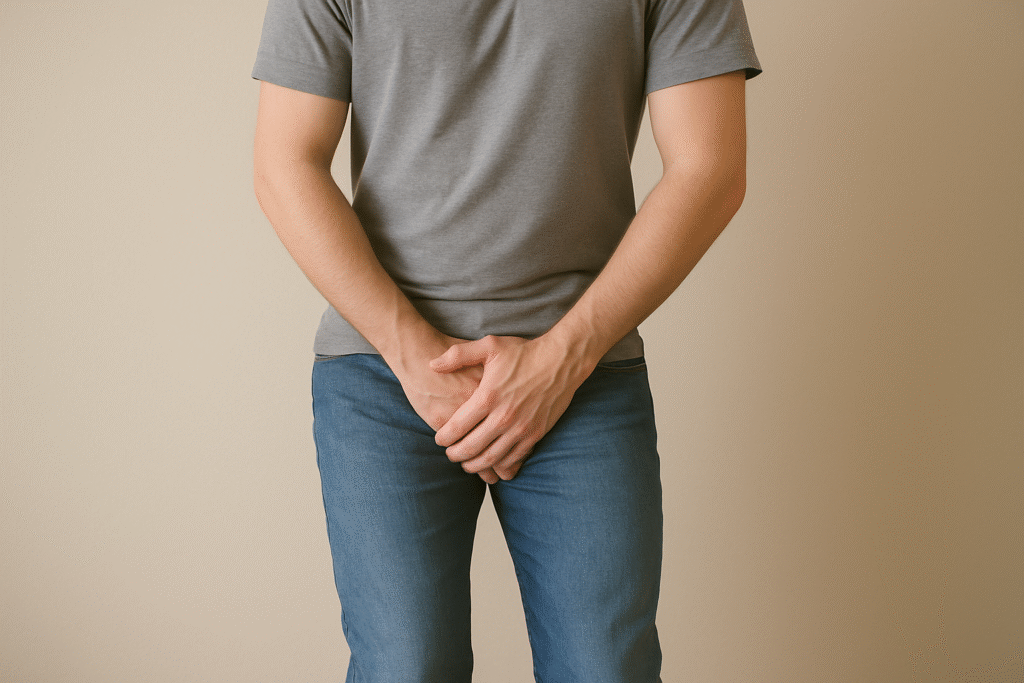Summary
- Back pain is a common condition affecting the spine, muscles, and nerves.
- Symptoms include localized pain, stiffness, and limited mobility, often triggered by poor posture or injury.
- Treatment involves physical therapy, pain management, and lifestyle adjustments like exercise and ergonomics.
Introduction
Back pain stands as a common health issue around the world, impacting individuals of different ages, from younger adults to older populations. It is a major reason for disability, hindering daily life, work, and general well-being.
The intensity of back pain can vary, presenting as either mild aches or severe limitations in mobility.
It can be categorized into three types: acute (less than six weeks), subacute (six weeks to three months), and chronic (more than three months).
Back pain can arise from any part of the spine, but it primarily affects the lower back, or lumbar area. The spine is made up of bones, joints, ligaments, muscles, and nerves, which can all contribute to pain.
There are many causes of back pain, and effective management needs a thorough approach that considers the root cause and the specific needs of the person.
Causes
Many factors can lead to back pain, including spine issues and more serious health problems. The main causes include:
1. Musculoskeletal Causes:
- Muscle or Ligament Strain: Overuse, incorrect lifting, or sudden unusual movements can hurt the back muscles and ligaments, leading to pain. This is a frequent cause of sudden back pain.
- Herniated Disc: This happens when the soft center of a spinal disc pushes out through a tear in the hard outer layer. It can press on nearby nerves, resulting in pain, numbness, or weakness.
- Degenerative Disc Disease: As people age, the cushioning discs between the vertebrae lose flexibility and moisture, causing discomfort and tightness.
- Spondylolisthesis: This condition arises when one vertebra moves forward over the one below it, resulting in pain and sometimes nerve pressure.
2. Nerve-Related Causes:
- Sciatica: A form of back pain from irritation or pressure on the sciatic nerve, stretching from the lower back to the legs. Sciatica is often marked by sharp pain radiating down the leg.
- Spinal Stenosis: The narrowing of the spinal canal can press on the spinal cord and nerves, leading to discomfort, numbness, or weakness in the back and legs, particularly in older adults.
3. Inflammatory Causes:
- Ankylosing Spondylitis: A spine-related arthritis that can result in intense back pain and rigidity. Over time it may cause the vertebrae to fuse together, reducing movement.
- Other Inflammatory Diseases: Conditions like psoriatic arthritis, rheumatoid arthritis, and inflammatory bowel disease can also cause long-term back pain due to spine inflammation.
3. Infections:
- Spinal Infections: Bacterial infections in the spine’s discs or bones, such as osteomyelitis or discitis, can lead to severe pain and other symptoms like fever.
- Urinary Tract or Kidney Infections: These infections can sometimes cause back pain as a referred symptom.
4. Trauma:
- Fractures: Injuries to the spine from falls or accidents can lead to fractures, resulting in significant pain. In serious cases, there might be spinal cord damage causing paralysis.
- Sprains or Strains: Quick, powerful movements or poor lifting techniques can cause injuries to back tissues.
5. Tumors:
- Spinal Tumors: Both non-cancerous and cancerous growths may form on or near the spine, causing pain through pressure on nerves or the spinal cord. This is not a common cause but can be serious.
- Metastatic Cancer: Cancers from other areas of the body (like breast, prostate, or lung) may spread to the spine, leading to back pain.
6. Psychological Factors:
- Stress and Anxiety: Ongoing stress, bad posture, or emotional pressure can contribute to muscle pain in the back. examine the back tension, leading to discomfort or worsening of existing pain.
- Depression: It can increase how pain feels, and those with ongoing back pain might face mental health issues that make physical symptoms worse.
Symptoms
Back pain symptoms can differ based on what is causing the pain and how severe it is.
Common symptoms include:
- Localized Pain: Pain felt mainly in the back, especially lower back, described as dull, aching, or sometimes sharp.
- Radiating Pain: Pain that spreads to the buttocks, legs, or feet, often seen in conditions like sciatica or herniated discs.
- Numbness or Tingling: Tingling or loss of feeling in the legs or feet may suggest nerve issues, such as sciatica or spinal stenosis.
- Weakness: Reduced strength in the legs can occur due to nerve compression or spinal injuries.
- Stiffness: Limited movement in the spine and difficulty in bending or straightening can occur, notably in conditions like osteoarthritis.
- Pain that Worsens with Activity: Back pain may get worse with certain movements like bending or lifting, but it might feel better with rest.
- Systemic Symptoms: In cases with infections or tumors, symptoms like fever or weight loss may appear.
Risk Factors
Various factors can raise the chance of developing back pain, such as:
- Age: Increased risk starts after age 30, as spine degeneration is more common with aging.
- Physical Activity: Jobs or sports that involve heavy lifting or twisting can increase back strain. A lack of movement can lead to weak muscles and bad posture, causing back pain.
- Obesity: Extra body weight can stress the spine and lead to back pain.
- Poor Posture: Bad posture while sitting or lifting can strain back muscles and ligaments, causing discomfort.
- Smoking: Smoking lessens blood flow to spinal tissues, causing degeneration and raising back pain risk.
- Previous Injury: Past back injuries, like sprains or fractures, increase the risk of recurring pain.
- Stress: Ongoing stress can cause muscle tension and pain in the back area.
Differential Diagnosis
Back pain can come from various conditions, so it’s important to distinguish it from other issues with similar symptoms.
Common differential diagnoses are:
- Hip Pain: Issues in the hip, like arthritis or fractures, can lead to pain in the lower back, making it hard to tell without proper checks.
- Kidney Stones: They can cause intense, sharp pain in the lower back or sides, often with urinary symptoms like pain or blood.
- Abdominal Aortic Aneurysm: An issue with the abdominal aorta can lead to deep, aching back pain, sometimes with dizziness or fainting.
- Cauda Equina Syndrome: A serious condition that involves nerve root compression in the lower back, showing severe back pain, incontinence, and weak legs. Quick diagnosis and treatment are vital to avoid lasting nerve damage.
- Gastrointestinal Issues: Problems like ulcers or pancreatitis can cause both gut and back pain, needing imaging and tests for distinction.
- Osteoarthritis: Similar to degenerative disc disease, it affects spine joints, leading to pain, stiffness, and less movement.
| Differential Diagnosis | Definition | Symptoms | Treatment |
|---|---|---|---|
| Back Pain | Pain originating from the spine, muscles, or nerves in the back, commonly due to strain or injury. | Localized or radiating pain, stiffness, and difficulty in movement. | Physical therapy, pain relief medications, and lifestyle changes. |
| Hip Pain | Pain caused by issues like arthritis, fractures, or bursitis in the hip joint. | Pain localized to the hip but may radiate to the lower back or thigh. | Joint injections, physical therapy, and sometimes surgical intervention. |
| Kidney Stones | Hard deposits of minerals forming in the kidneys, leading to obstruction and pain. | Severe, sharp pain in the lower back or side, often with nausea, vomiting, or blood in urine. | Hydration, pain management, and procedures like lithotripsy for stone removal. |
| Abdominal Aortic Aneurysm | Enlargement of the abdominal aorta, potentially leading to rupture. | Deep, aching back pain, sometimes with pulsating sensations or symptoms of shock. | Emergency surgical repair for ruptures, monitoring, and controlling blood pressure. |
| Cauda Equina Syndrome | A rare condition where the nerve roots in the lower back are compressed. | Severe back pain, incontinence, numbness in the groin, and leg weakness. | Urgent surgical decompression to prevent permanent damage. |
| Gastrointestinal Issues | Conditions like ulcers or pancreatitis that can refer pain to the back. | Abdominal pain radiating to the back, nausea, or digestive issues. | Medical management of the underlying gastrointestinal condition. |
| Osteoarthritis | A degenerative joint disease causing wear and tear in the spine. | Back pain, stiffness, and limited range of motion, typically worse with activity. | Physical therapy, anti-inflammatory medications, and exercise. |
Investigation
To diagnose back pain, a healthcare provider will Typically, a detailed history and physical check are done to find the cause.
If needed, more tests might be done:
- X-rays: These images show fractures, misalignments, or changes in the spine.
- MRI (Magnetic Resonance Imaging): MRI checks soft tissues like discs, muscles, ligaments, and nerves, helping to find herniated discs, spinal stenosis, or tumors.
- CT Scan (Computed Tomography): A CT scan gives detailed pictures of bones and soft tissues of the spine to spot issues like fractures or tumors.
- Electromyography (EMG): EMG looks at electrical activity in muscles to check for nerve damage or compression, especially in cases like sciatica.
- Blood Tests: These tests help find infections, inflammation, or diseases that might relate to back pain.
Treatment
Back pain treatment depends on the cause, symptom severity, and patient health.
Common treatments include:
1. Conservative Treatment:
- Rest and Activity Changes: Stopping activities that increase pain, like heavy lifting, helps prevent more injuries. Long bed rest should be avoided to prevent muscle weakness.
- Physical Therapy: This therapy improves posture, strengthens spine-supporting muscles, and increases flexibility. Exercises are key for recovery and preventing further issues.
- Pain Relievers: Over-the-counter meds like acetaminophen, ibuprofen, or naproxen help with mild to moderate pain.
Hot/Cold Compresses: Using hot or cold packs on the painful area can ease pain and swelling.
2. Medications:
- Muscle Relaxants: Drugs like cyclobenzaprine or methocarbamol can be given for muscle spasms related to back pain.
- Opioids: In serious cases, opioids may be used for short-term pain relief, but they pose dependence risks.
- Antidepressants or Anticonvulsants: For ongoing or nerve-related back pain, meds like amitriptyline or gabapentin help alter nerve signals and decrease pain.
3. Injections:
- Corticosteroid Injections: For severe inflammation, these injections can offer temporary relief.
- Facet Joint Injections: They target spine joints to lower inflammation and relieve pain.
4. Surgery:
- Discectomy: This surgery removes a herniated disc pressing on a nerve.
- Spinal Fusion: If there’s severe degeneration or instability, spinal fusion can stabilize the spine.
- Laminectomy: This is the removal of part of the vertebrae to relieve spinal cord or nerve pressure.
5. Alternative Therapies:
- Acupuncture: Some people find pain relief through this traditional Chinese technique.
- Chiropractic Care: Licensed chiropractors perform spinal adjustments that may help certain back pain types.
Conclusion
Back pain is common and can be disabling. Most cases resolve with basic treatment, but it is crucial to find the cause and customize treatment.
Early action, lifestyle changes, and suitable medical care can prevent long-term issues and enhance life quality.
For those with ongoing or severe back pain, a full approach with physical therapy, pain management, and possibly surgery can provide relief and improve functionality.
- Manchikanti, L., & Singh, V. (2014). “Epidemiology of low back pain in the United States.” Neuroimaging Clinics of North America, 24(1), 1-9.
- Deyo, R. A., & Weinstein, J. N. (2001). “Low back pain.” New England Journal of Medicine, 344(5), 363-370.
- National Institute of Neurological Disorders and Stroke (NINDS). (2019). Low Back Pain. Available at: https://www.ninds.nih.gov
- Schmid, A. B., & Pfeifer, M. (2013). “The efficacy of conservative treatments for low back pain.” Best Practice & Research Clinical Rheumatology, 27(4), 535-548.

